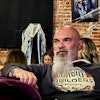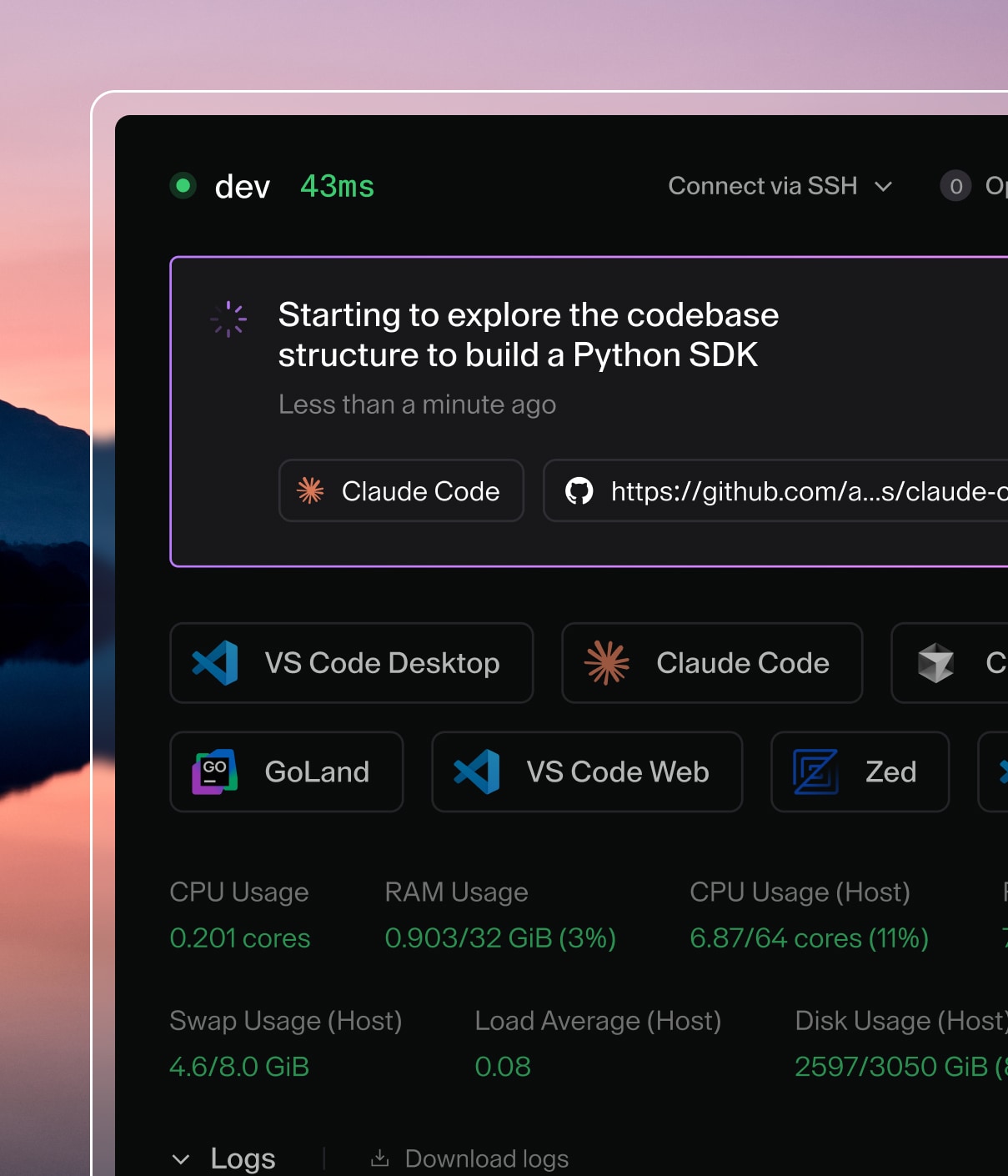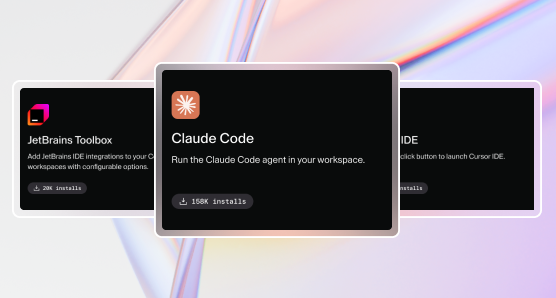Building Blocks to Code Blocks: A Minecraft Player’s Solution to Better Team Coding

Whiteboard design sessions and cloud development have always lived in separate worlds, until now. I recently sat down with Romain Courtois, one of the creators of pad.ws, who's merging these experiences to create what he calls 'the whiteboard IDE.' Our conversation revealed how his journey from Minecraft player to platform builder offers views into the future of development.
The Minecraft Kid Who Built a Developer Platform
Like many in his generation, Romain Courtois got his start in the digital world through Minecraft. "I'm your basic Minecraft kid," he explains. "I spent my early days on all kinds of servers, building all kinds of stuff." This gaming experience sparked an interest in coding that eventually led him to a unique educational path.
Rather than pursue a traditional computer science degree, Romain enrolled at 42, France's famous tuition-free, teacher-less coding school. At 42, students learn through peer programming and community-based projects, which is an approach that deeply influenced Romain's development philosophy.
"The way it's built, they call this 'peer learning' because you don't have teachers or any schedule. You just come in and do projects with your peers," Romain explains. "This approach, I feel, is very aligned with how the internet actually works. Everything is built on peer exchanges and people contributing to open source code."
After honing his skills at 42, Romain worked at Salesforce and Heroku managing databases, which gave him valuable experience in networking and infrastructure. However, he soon realized the corporate world wasn't his final destination. "I felt like I wasn't really made for a job in a corporate," he admits. "I was drawn to entrepreneurship, building on my own and seeing how it goes."
The Birth of pad.ws: Combining Whiteboards and IDEs
Pad.ws emerged from a simple realization: developers constantly switch between design tools and coding environments. Romain and his friend, Alex Tyrode, wanted to merge these experiences.
"I built pad.ws with a friend, and we call it the whiteboard IDE, because it merges two ideas that we love," Romain explains. "He loves the whiteboard, the infinite canvas, and the note-taking aspect. Meanwhile, I love the cloud development aspect."
When searching for cloud development solutions, Romain first experimented with other options but found they didn’t fit his needs. "At first, there was this GitHub Codespaces, which was really promising. But in the end, it had a lot of limitations because it wasn’t self-hostable," he explained. His journey led him to Coder, an open-source platform for cloud development environments that offered the flexibility he needed.
"What took the longest was to actually understand that I needed Coder instead of Code Server," Romain admits. "Developers always love to have minimal dependencies. We try to not install much. But sometimes you just need that extra abstraction on top."
The distinction matters: Code Server lets you run VS Code in the browser, while Coder manages the entire development lifecycle with supporting infrastructure.
For the whiteboard component, they chose Excalidraw for its flexibility and MIT license, though they eventually needed to fork it to add customizations for better embedding capabilities. "It's mostly around the embeddings," Romain explained. "Excalidraw is really focused on drawing stuff, but it wasn't designed with our level of embedded content in mind. We had to customize some things to accommodate that." Despite needing these modifications, Romain emphasized that "Excalidraw has been flawless so far. It's amazing."
The Magic Behind pad.ws: Cloud + Canvas + AI
Romain demonstrated pad.ws's capabilities, showing how it combines CDEs with an infinite canvas for drawing and planning. But what truly stands out is how pad.ws integrates AI into the workflow.
In one impressive demo, Romain showed how he used the canvas to design a system architecture, which he could then share with an AI agent for feedback. "I can just take a screenshot of this and give it to any model," he explains. "The models are actually really good at computer vision. I can ask, 'What do you think? Am I missing something?'"
This approach changes how developers interact with AI. Instead of just using AI for code generation, pad.ws positions AI as a helpful coding partner in the design process. As Romain puts it: "I'm able to concentrate on the important aspects of what I'm doing. I can focus on the architecture and the flow of how that application is going to go."
In practice, this means a development team could use pad.ws to collaboratively design a system architecture on the canvas, receive AI feedback on potential flaws, and immediately start implementing the code all in the same workspace. For example, a frontend developer and backend developer could simultaneously work on their respective components while seeing how their pieces fit together in the bigger picture. This eliminates those 'I thought you were building it differently' moments that often hinder traditional development workflows.
Romain believes that while AI can be a powerful coding partner, the human still drives the process: "Your prompt's doing the coding, but your AI is doing all that typing for you."
The Community Approach: Open Source All the Way
Since its initial reveal, pad.ws has gathered significant community interest, amassing over 2,000 GitHub stars in just a month. Romain attributes this to the project's vision rather than its current state.
"People are convinced by the vision more than the actual product so far," he acknowledges. "This gives us unlimited motivation to build the actual vision, but we also understand that we're not quite there yet."
True to his peer-learning roots, Romain has made pad.ws fully open source and welcomes contributions. "Every contribution is welcome. The project might seem a bit daunting, but it's really just a simple Fast API backend and React frontend with nothing particularly complex."
His roadmap focuses on making pad.ws a true team workspace: "Our current focus is to make it multiplayer. We want people to be able to just draw in the same canvas and, ideally, access the same dev environment simultaneously."
While a paid SaaS option may come later, Romain is committed to keeping the self-hosted version free: "That’s the kind of internet I want to build."
Lessons for Developers: The Vibe Matters
Beyond the technical details, Romain shared some refreshing takes regarding development culture. When asked about the intensive work schedule (he and Alex code about 15 hours daily), Romain shifted the focus from productivity to enjoyment.
"In this formula, the vibe coding, I think people are too focused on the coding aspect. The vibe is what's important," he explains. "You need to spend good time with your partners, and that's how you build good software. You develop good ideas and find clever solutions not by reading a lot or working excessively hard, but by simply having a good time."
This focus on enjoyment extends to how they interact with AI. "Once in a while, we just throw some jokes and nonsense in the prompts just because it makes us laugh," Romain shares. "Claude never really laughs at my jokes, but I do, so I don't care."
For developers looking to build on existing open-source projects, Romain offers two pieces of advice:
- "Just go open source. There's no good reason not to be open source. You can monetize. You can find everything that you fear that you won't have, but open source is the way if you want people to just see your software and use it."
- "Just ship it. Don't wait for perfection. Ship something that has flaws, ship something that contains bugs. You ultimately want people to tell you where the bugs are rather than spending time finding them yourself."
Looking Forward: What's Next for pad.ws
As pad.ws continues to take shape, Romain's vision extends beyond just creating another development tool. He wants to fundamentally change how developers access computing resources.
"What I hope to build is an IDE that allows anyone in the world to simply open a browser, access Linux, and do whatever they want with it," he explains. "We don't know exactly what people will create with this capability, but that's precisely what makes me excited about it."
With team-based features on the horizon and a growing community of interested developers, pad.ws represents a fresh take on what development environments can be in an age where AI is changing how we build software. Just as Minecraft taught a generation of kids to create worlds block by block, pad.ws is enabling developers to build software with the same spirit of creativity and togetherness. Those blocks have now changed into lines of code, architectural diagrams, and intelligent assistance. For Romain, the journey from placing digital blocks in a game world to creating a platform where developers can build together feels like a natural evolution. Perhaps this signals how our digital pastimes are shaping the tools of tomorrow.
For those interested in trying pad.ws or contributing to the project, you can find Romain on Twitter (@romdot2), TikTok (@cyclotruck), or Discord through the pad.ws GitHub repository.
How has your experience with games or other creative hobbies influenced your approach to development? What aspects of your current workflow would you most like to see with a fresh take? Share your thoughts in the comments!
Subscribe to our newsletter
Want to stay up to date on all things Coder? Subscribe to our monthly newsletter and be the first to know when we release new things!


